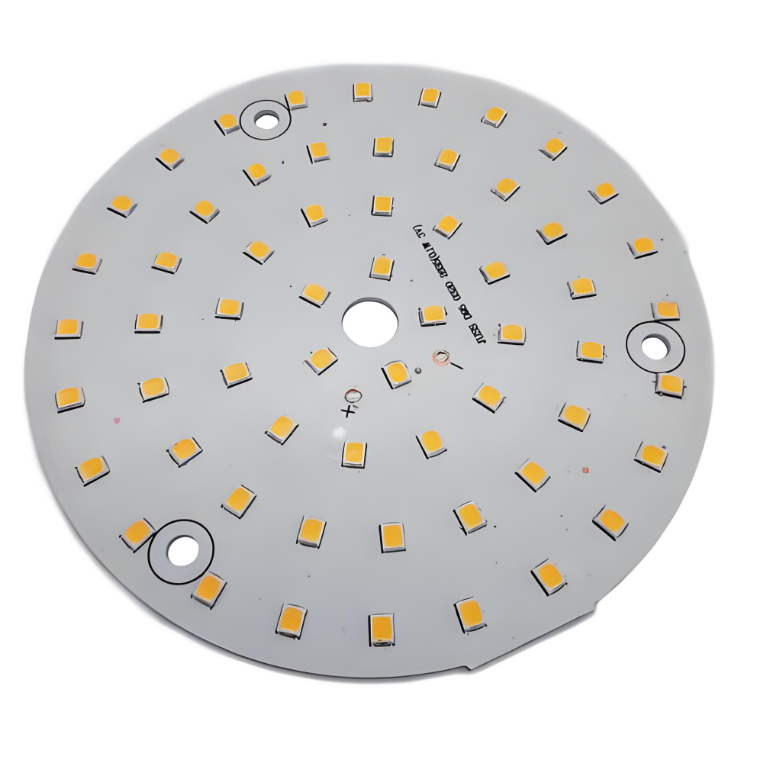PCB has an indispensable position in the field of intelligent lighting. The following is a detailed description of its role from three aspects: smart light bulb, smart light control panel, and smart sensor light:

Intelligent light bulb
Core control realization
The PCB is equipped with a microcontroller (MCU), which acts as the “brain” of the smart bulb, receiving and processing commands from the remote control, cell phone APP, and so on. Accurately control the brightness, color, and switching status of the bulb, etc. It can also realize automation functions such as timer switching and scene switching.
Power management guarantee
Integrated power management circuitry converts AC power to stable DC power. The power supply for other electronic components in the bulb, and its design affects energy efficiency and stability, efficient conversion can reduce energy consumption and prolong life.
Dimming and color control function support
Equipped with a dimming chip and color control chip. According to MCU instructions to accurately adjust the light bulb brightness and color temperature, to meet the user’s needs for light in different scenarios. For example, different light effects in reading and leisure modes.
Intelligent light control panel
Function Integration Key
PCB integrates core components such as a touch sensor chip, display driver chip, communication chip, and MCU. The touch sensor chip realizes the touch button function of the panel. The display driver chip drives the display to show the light status and other information to provide users with operational feedback.
Communication and Connection Core
The communication chip supports various protocols (e.g. Wi-Fi, Bluetooth, ZigBee, etc.). It ensures that the light control panel is compatible with smart bulbs and other devices, realizing seamless connection and control, and the MCU coordinates the work of each chip, processes commands, and realizes centralized management of lights.
Heat dissipation and anti-interference design
Consider heat dissipation and design heat sinks or holes. Ensure that the high-power components work at a suitable temperature; adopt shielding measures to avoid external electromagnetic interference. Improve the anti-interference ability of the system to ensure stable operation.
Intelligent Sensor Light
Intelligent induction base
PCB integrates human body sensors, light sensors, MCU power supply circuits, and other components. The human body sensor detects human activity, and the light sensor detects environmental light intensity. The two signals are processed and transmitted to the MCU to realize automatic lighting sensor control and achieve energy saving.
Sensor Layout and Signal Processing
Human body sensing and light sensor layout is critical, and need to be reasonably installed in the shell to ensure accurate detection. PCB circuit to the sensor signal amplification, filtering, and processing. The PCB circuit amplifies, filters, and processes the sensor signals to remove noise interference and enable the MCU to accurately determine the timing of the light switch.
Power supply design features
The power supply circuit is carefully designed with low power consumption features to extend battery life. It also has an undervoltage protection function to prevent the over-discharge of the battery from damaging the components and to ensure that the sensor light operates normally at low power levels.
PCB plays a key role in all aspects of intelligent lighting, and with the development of technology, it will promote the continuous progress of intelligent lighting and create a better lighting environment.
